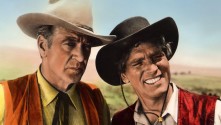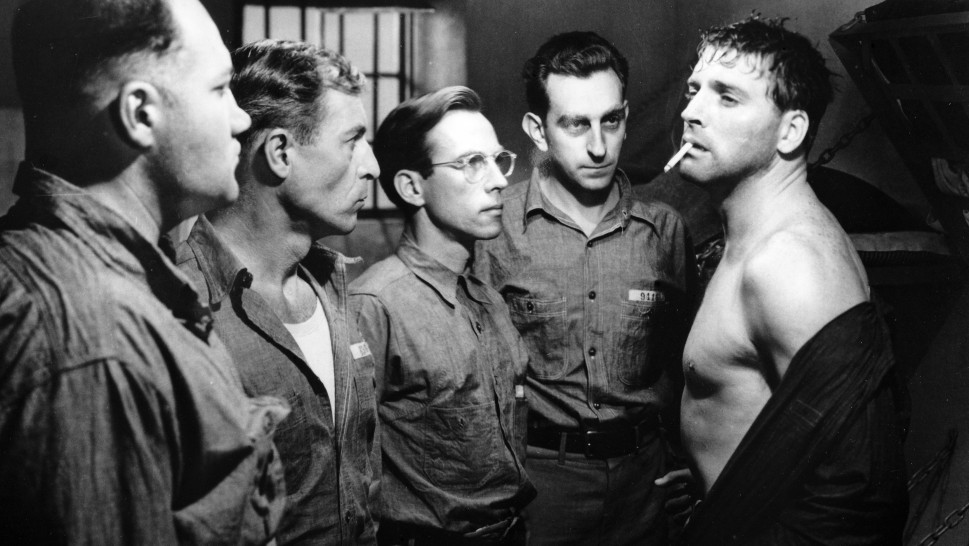
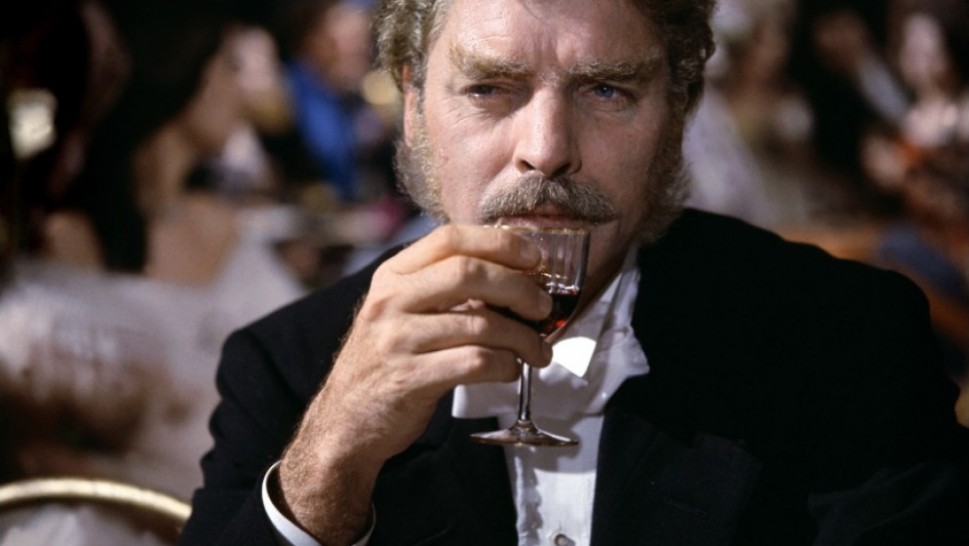
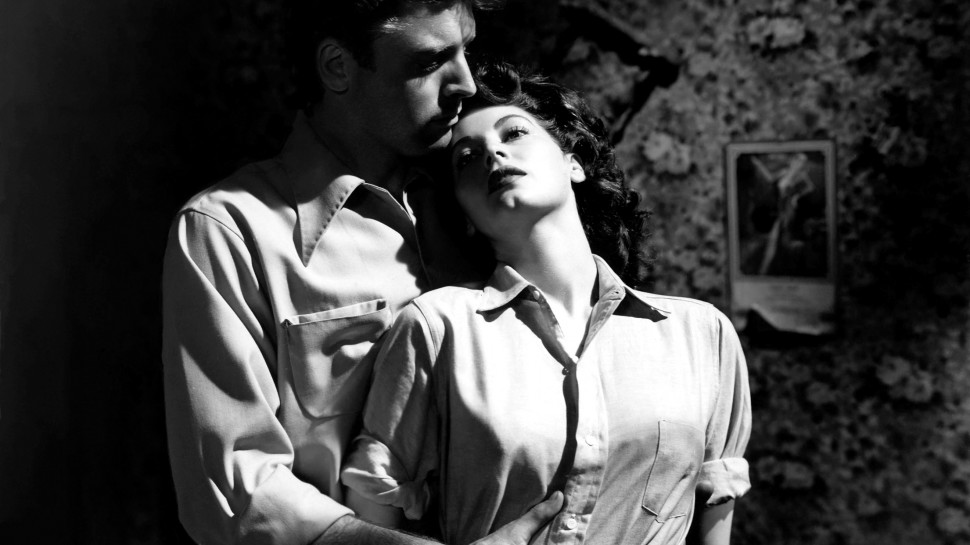
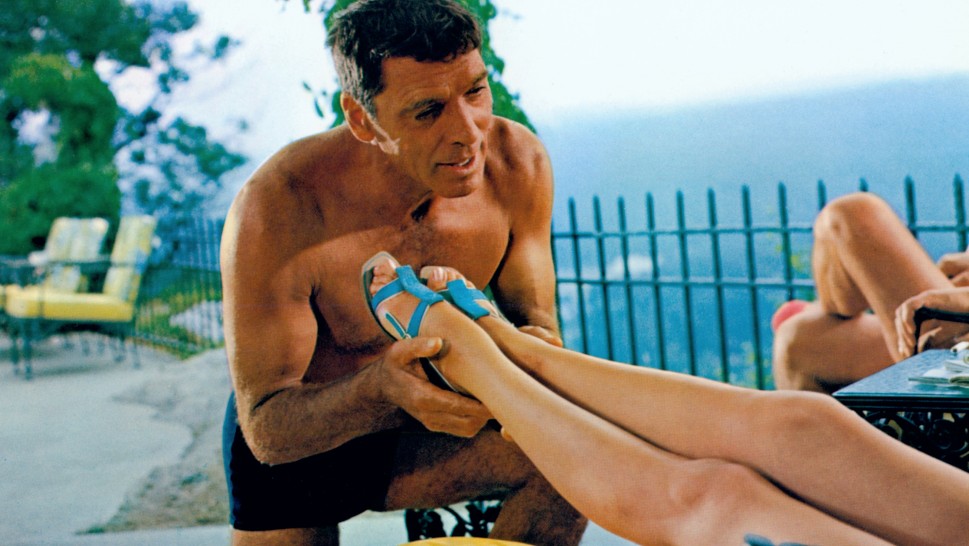

A Burt Lancaster Centennial Tribute
Both parents the children of Irish immigrants, Burt Lancaster (1913 – 1994) was born into the overflowing, boisterous melting pot of New York’s East Harlem. Precociously garnering attention as a child in plays at the local Union Settlement House, Lancaster tried to escape his starry destiny, even rejecting scholarship offers by the famed American Laboratory Theater. Instead, a surprising growth spurt pointed the avid reader and restless student toward a more athletic vision, and he eventually left the confines of the classroom to join the circus. He and acrobatic partner Nick Cravat developed a vaudevillian act which the Army then applied toward Lancaster’s tour of duty in WWII entertaining troops and filling many roles in the fast-paced production of their half-improvised revues.
Not long after the war’s end, Hollywood quickly took notice of the tall, blonde Adonis in his first Broadway play and wasted no time shuttling him into the silver spotlight. Gleaming beneath the sharp shadows of Robert Siodmak’s master noir The Killers, the newborn star was instantly propelled to supernova status. As he sped to the top, Hollywood had little time to prepare for the actor’s outspoken confidence, indefatigable vigor, sincere sense of duty and cautious skepticism of Tinseltown’s glamorous machinations. Enthusiastic and eager to understand every aspect of movie-making, Lancaster became notorious for intellectually analyzing scenes and taking over productions. Though often resulting in spectacular clashes with his directors and co-stars, this also meant he maintained meticulous control of the action – performing all of his own stunts and developing an innate sense of staging. He also had what no other actor could claim: an acrobat’s grace and lithe, muscular body which he directed with subtle precision.
Despite his inexperience, the young Lancaster was galvanized by the new phenomenon of semi-independents who worked with studios yet maintained creative control. One of the largest actor-managed studios at the time, Hecht-Hill-Lancaster and its other incarnations and companies produced over twenty films with and without the star, including Kiss the Blood off My Hands, Run Silent Run Deep and the surprise success Marty – the first American film to win the Palme d’Or at Cannes. The studio was fatefully run aground by its daring, icy exposé of the incestuous celebrity and press courtship in Sweet Smell of Success. One of their most brilliantly crafted works of art and one of Lancaster’s most chillingly corrosive roles, the film proved too much of a shock to starstruck 1950s audiences.
In acting, producing and in his few instances directing, Lancaster remained the fearless entertainer swinging from a great trapeze. Balancing popular films with “art pictures” and braving self-imposed challenges, Lancaster made a career of learning on the job through radical departures and intentionally chose roles against any mold that began to form too tightly around him. For every From Here to Eternity, Gunfight at the OK Corral or Crimson Pirate, there was Come Back Little Sheba, The Leopard or The Swimmer. Remaining invested in his audience and the bottom line as well as broader artistic and moral statements, he mixed his art and celebrity with his politics, often taking on projects that suited his various social causes. With varying degrees of success, he continued throughout his life to exercise his fame and power by attempting to push past his own limits as well as those of mainstream Hollywood. At the age of 47, he portrayed a Nazi in Judgment at Nuremberg and starred in the edgy, low-budget The Young Savages; that same year he was named the number one box office star in the U.S.
Gracefully poised between inordinate fame and quixotic reinvention, the uniqueness of his path through cinema may slip by unnoticed, while the stately figure of Lancaster pervades the legendary Hollywood statuary like a formidable Everyman. The quintessential Burt Lancaster mannerisms and clipped diction – plus the teeth and the physique – complete an undeniably commanding and distinctively American presence. Certainly, the consummate Lancaster character – with his independence, earnest openness and a dreamy introspection often taken to heroically idealistic heights – seems a manifestation of America’s ideal projection of itself. Perhaps his control over the finished product – combined with his less-than-glamorous risk-taking – contribute to his films’ direct reflection of his own maturation and that of his prime American audience. In the words of biographer Kate Buford, the span of Lancaster’s greatest work “charts the arc of postwar mainstream American life.”
In collaboration with the Brattle Theatre, the HFA is thrilled to celebrate the centennial of the fascinating American icon, Burt Lancaster. – Brittany Gravely















